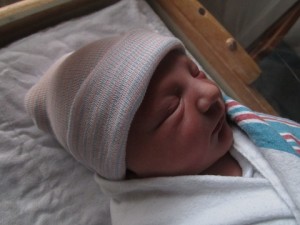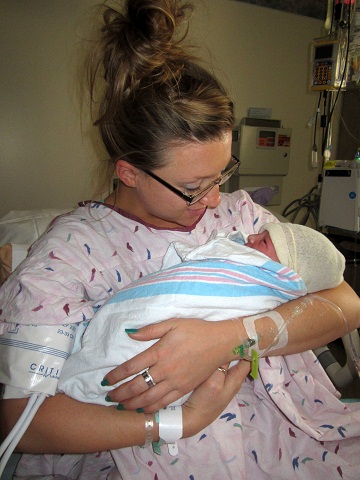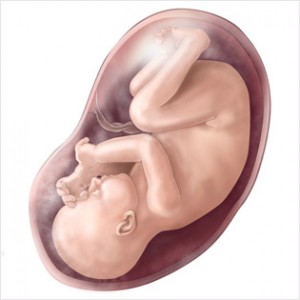 This afternoon there was a funny noise in our cottage: the sound of a newborn. Birgitta and Emerald arrived home together but not as together as they’d been for the last 9 months. Now the cord has been cut, and Emerald is breathing and eating as a separate entity. We’ve had the joy of watching her birth and have been changed by the wonder of it all.
This afternoon there was a funny noise in our cottage: the sound of a newborn. Birgitta and Emerald arrived home together but not as together as they’d been for the last 9 months. Now the cord has been cut, and Emerald is breathing and eating as a separate entity. We’ve had the joy of watching her birth and have been changed by the wonder of it all.
Birgitta impressed us by persevering through a torturously long labor that began on Tuesday evening and ended Friday afternoon. Though she’d hoped to pursue an all-natural delivery, the unrelenting contractions that refused to “get organized” (nursing terminology) dictated a different route.
Eventually she had a talk with herself and willingly set aside her personal goals to do what was best for her baby: get her born. She acquiesced to drugs that sped up labor to intolerable levels, then finally had to say yes to additional drugs that helped her save energy for the big push.
In the end, after 67 hours of labor, little Emerald emerged peacefully and intact, swinging one arm out ahead of the rest of her as if to say, “Hi, everybody!” Her delivery room audience of 9 applauded and voiced a welcome, and Birgitta’s longing to meet her baby was satisfied.
The only almost-casualty was Louisa. Overcome with emotion, she came close to a dead-faint but for a quick-thinking nurse and a cold cloth to her neck. Louisa rallied, though, in time to finish videoing the birth and hear that the baby’s middle name would be her own. Her tears of happiness blessed us all.
This labor and delivery was a perfect example of the way God works, too. His solutions to our problems always seem laborious and slow in coming. We ask him to help, then wonder. Did he hear? Is he too busy? Does he care? Can he see this suffering? Why won’t he act?
And then, just like with Birgitta’s seemingly interminable labor, everything changes quickly and resolves. In some cases our cries to God don’t come together with his solutions for months or even years, and while we’re waiting, we lose heart. When that happens, the only thing to do is take his promises at face value and, like Birgitta, continue to persevere. He says, “Remember, I’m still in the middle of this, even though you can’t see me. I said I’d bring an end to your pain, and I will. My methods aren’t like yours, but believe me that they’re always better. You’ll absolutely marvel!”
What better metaphor for that long process than labor and delivery? Birgitta’s memory of her struggle rapidly diminished as elation took over, just as it does when the Lord brings new circumstances that obliterate our old troubles.
We look at what he’s done and wonder how we could have ever doubted he would do it.
“A woman giving birth to a child has pain because her time has come; but when her baby is born she forgets the anguish because of her joy.” (John 16:21)





